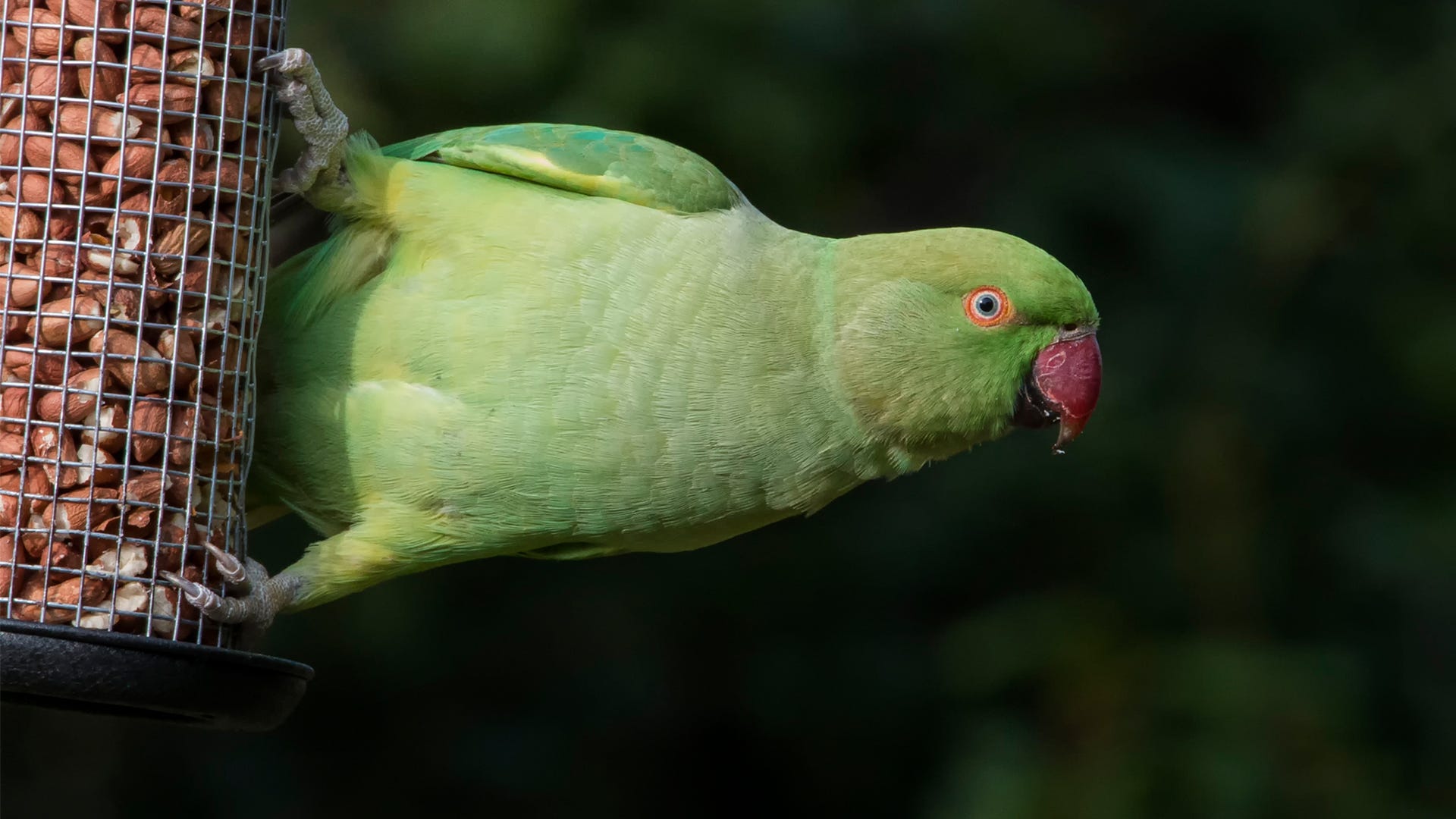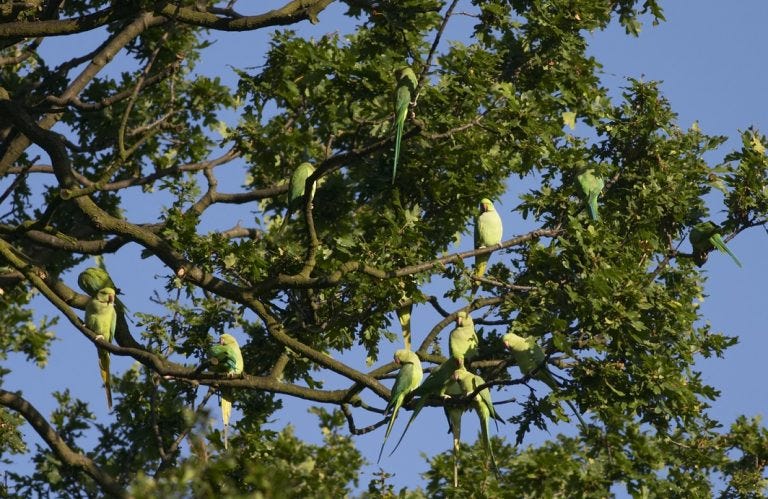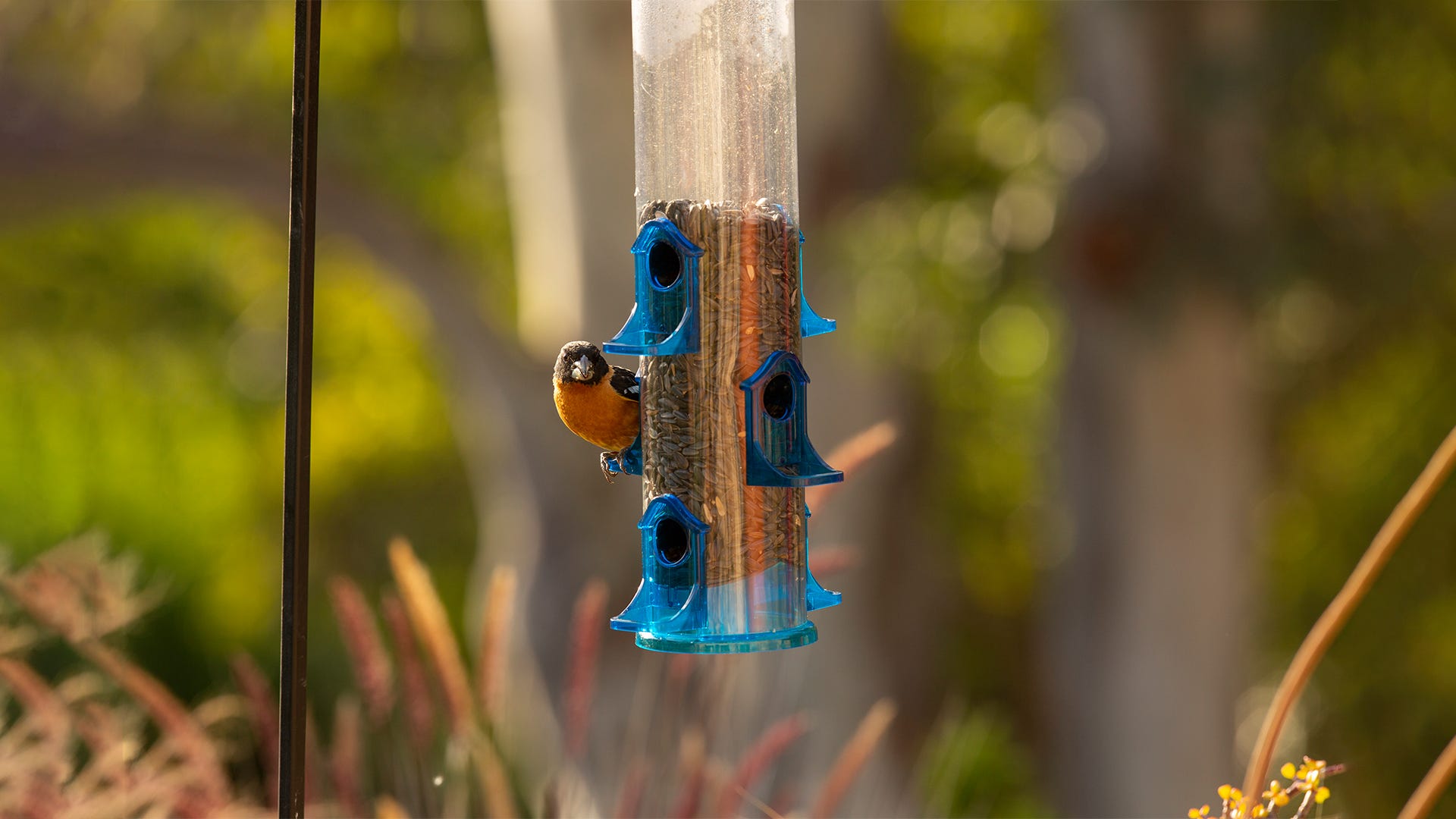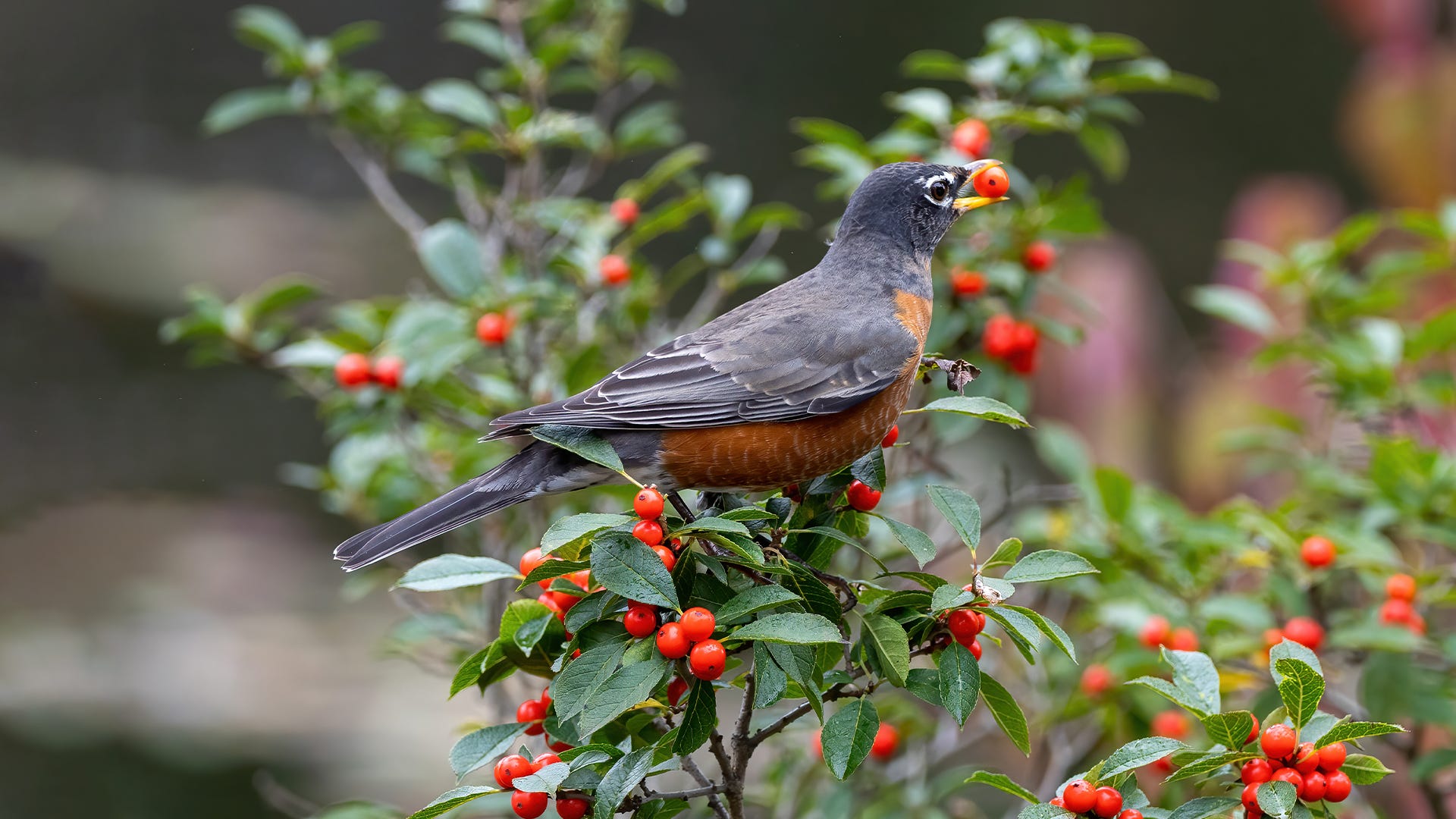
Have you spotted a flock of parakeets in your city park? Or maybe you’ve noticed a parrot flit through your yard? You’re not just imagining it! Parakeets, parrots and other exotic birds have lately been popping up in areas where they were previously only living as pets.
With booming populations of these colorful birds in North American cities, from New York to San Francisco, and other places around the world, it’s important to ensure that, like your other backyard visitors, they have access to the proper food and water. Whether or not you’ve seen these remarkable birds in your neighborhood, read to learn more so you’ll know what to do if one ever drops by.

Why Are There So Many Wild Parrots and Parakeets?
With sizable populations of these birds suddenly showing up in non-tropical or non-native regions, you may be wondering how they got here. The best explanation for their abundance is the popularity of having these exotic birds as pets.
People have long admired these exotic beauties for their colorful plumage, entertaining behavior and amazing intelligence, and domesticated them as a result. However, like any other pet, birds are prone to escape. When they do, these birds make the best of their newfound freedom – which is the likeliest explanation for why you can now find the Monk Parakeet in abundance throughout New York City.
There are also cases, in places such as Bakersfield, California, where a few breeding Rose-ringed Parakeets got loose from an aviary during a storm in the 1970’s. Decades later, thousands of wild parakeets now thrive in their unlikely home.
Parrots and parakeets adapt their dietary needs to the resources available in their current environment, making them incredibly resilient. Due to the year-round supply of bird food available in many yards around the country, these striking birds are able to survive in the wild in areas far from their countries of origin. As further proof of their adaptability, these birds have successfully bred with each other in their new homes, which is why huge populations of them can now be found in so many unexpected places.
Feeding Exotic Birds in Your Yard
Despite their resilience and ability to adapt in many habitats, parrots and parakeets still appreciate some assistance to thrive in non-native environments. So what do you feed them, and how?
How to Provide Food and Water
We’ll start with the how. There are a few great options for providing food to your unique visitors:
 Consider buying a parrot feeder. Parrots and parakeets are larger than many average backyard birds, which means they may not fit on some of your smaller seed feeders. Check your local pet stores for parrot feeders or hang a larger wild bird feeder.
Consider buying a parrot feeder. Parrots and parakeets are larger than many average backyard birds, which means they may not fit on some of your smaller seed feeders. Check your local pet stores for parrot feeders or hang a larger wild bird feeder.
- Set out a shallow dish. These birds favor food sources that can be easily accessed. To satisfy this preference, place clean, shallow dishes of food in a safe area around your yard. If there are cats and dogs around, make sure to elevate it. Alternatively, use a tray feeder, which offers similar benefits.
- Hang treats from your balcony or trees. These vibrant birds are able to chew many fresh foods. To attract them to your yard, hang fruit and other fresh treats using natural twines.
- Add a waterer. Like other birds, parrots and parakeets need water, as well as food. Place a waterer or bird bath in your yard close to feeding stations so they can stop in for refreshments as needed.
Best Foods for Wild Parrots and Parakeets
After deciding which type of feeding station to set up, it’s time to select the food you’ll be offering. Here are some great food options to attract parakeets and parrots to your yard if they’re in your area:
- Nuts – Parrots and parakeets are especially fond of nuts, such as almonds and peanuts, especially if they are still in their shell.
- Fruits – They love to feast on fresh foods. Favorite fruits for these birds include bananas, berries, nectarines, apples and figs. Remove any seeds or pits before offering these foods.
- Seed – Though parrots and parakeets prefer fresh food, they also enjoy seed blends. They will eat the same seed blends preferred by your other wild birds. You can also find mixes specifically for wild parrots, which often feature a mix of seeds, dried fruits and nuts.
Foods to Avoid When Stocking Your Feeding Stations
While parrots and parakeets love many fresh foods, a few offerings can actually be toxic or harmful to your colorful visitors. The primary foods to avoid are:
- Avocado
- Rhubarb
- Onion
- Tomato
- Garlic
- Mushrooms
Exotic Birds in Your Neighborhood
Have you seen parakeets or parrots at your bird feeders? We want to hear about it! Share pictures of your sightings the next time you visit our Facebook page. Do you want to know more about feeding these exotic beauties? Let us know!
If you want to be notified of more great articles like this one, be sure to sign up for our e-newsletter. You’ll also gain access to discounts on your bird feeding purchases.








